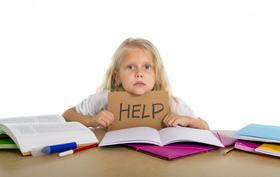Serving 1,985 students in grades 9-12, Auburn High School ranks in the top 50% of all schools in Illinois for overall test scores (math proficiency is top 50%, and reading proficiency is top 50%).
The percentage of students achieving proficiency in math is 26% (which is lower than the Illinois state average of 28%). The percentage of students achieving proficiency in reading/language arts is 25% (which is lower than the Illinois state average of 30%).
The student:teacher ratio of 19:1 is higher than the Illinois state level of 13:1.
Minority enrollment is 73% of the student body (majority Black), which is higher than the Illinois state average of 55% (majority Hispanic and Black).
Quick Stats (2025)
- Grades: 9-12
- Enrollment: 1,985 students
- Student:Teacher Ratio: 19:1
- Minority Enrollment: 73%
- Graduation Rate: 60% (Btm 50% in IL)
- Overall Testing Rank: Top 50%
- Math Proficiency: 26% (Top 50%)
- Reading Proficiency: 25% (Btm 50%)
- Science Proficiency: 19% (Btm 50%)
- Source: National Center for Education Statistics (NCES), IL Dept. of Education
Top Rankings
Auburn High School ranks among the top 20% of public schools in Illinois for:
Category
Attribute
Diversity
School Overview
Auburn High School's student population of 1,985 students has grown by 8% over five school years.
The teacher population of 103 teachers has stayed relatively flat over five school years.
Grades Offered
Grades 9-12
Total Students
1,985 students
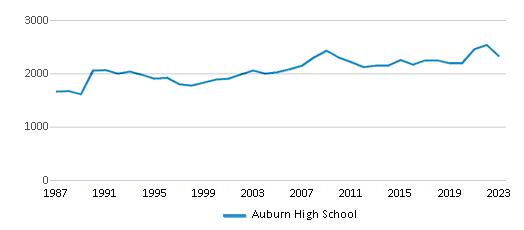
Gender %
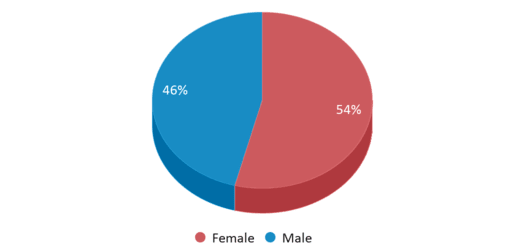
Total Classroom Teachers
103 teachers
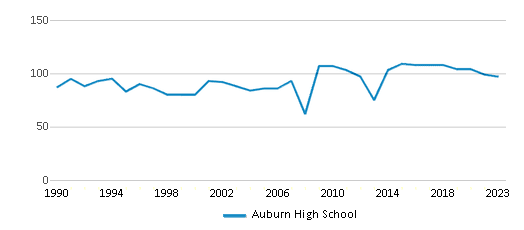
Students by Grade
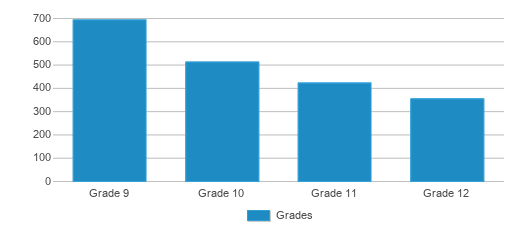
School Calendar
School Rankings
Auburn High School ranks within the top 50% of all 3,426 schools in Illinois (based off of combined math and reading proficiency testing data).
The diversity score of Auburn High School is 0.71, which is more than the diversity score at state average of 0.70. The school's diversity has stayed relatively flat over five school years.
Overall Testing Rank
#1514 out of 3426 schools
(Top 50%)
(Top 50%)
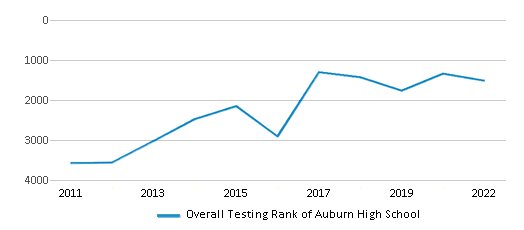
Math Test Scores (% Proficient)
(20-21)26%
28%
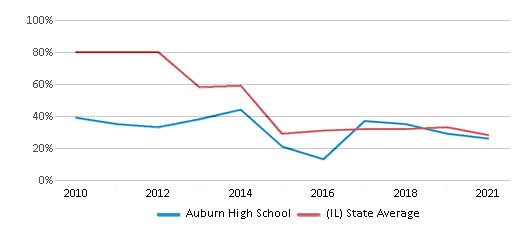
Reading/Language Arts Test Scores (% Proficient)
25%
30%
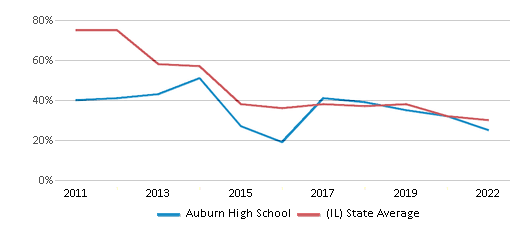
Science Test Scores (% Proficient)
19%
50%
Student : Teacher Ratio
19:1
13:1
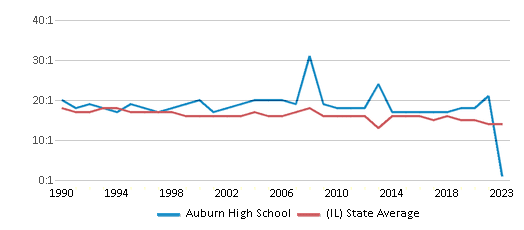
American Indian
n/a
1%
Asian
4%
6%
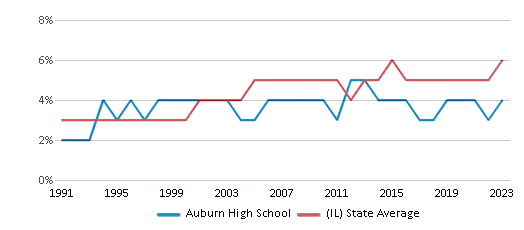
Hispanic
19%
28%
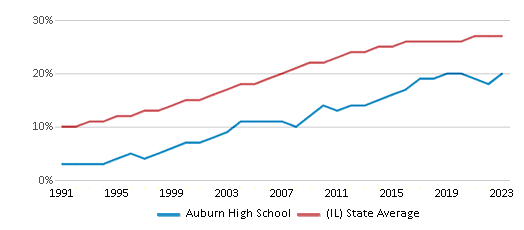
Black
42%
16%
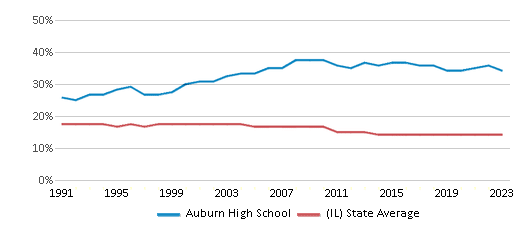
White
27%
45%
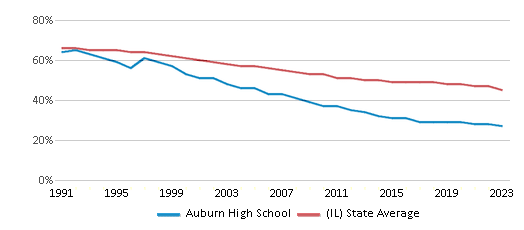
Hawaiian
n/a
n/a
Two or more races
8%
4%
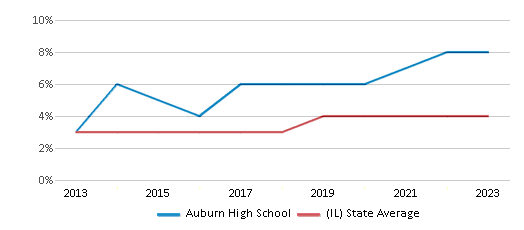
All Ethnic Groups
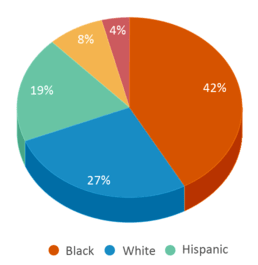
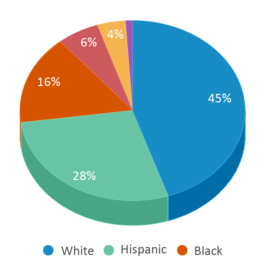
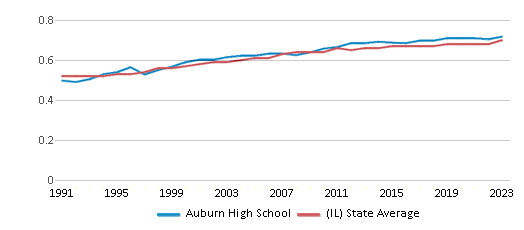
Graduation Rate
60%
87%
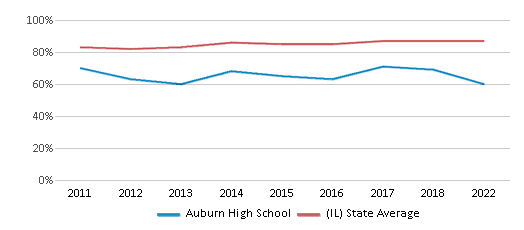
Eligible for Free Lunch
46%
43%
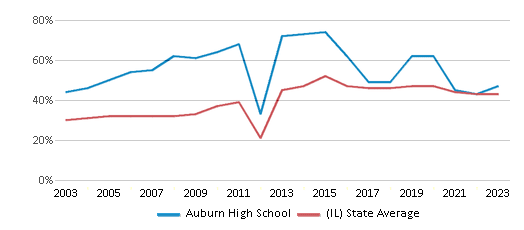
Eligible for Reduced Lunch (14-15)
4%
2%
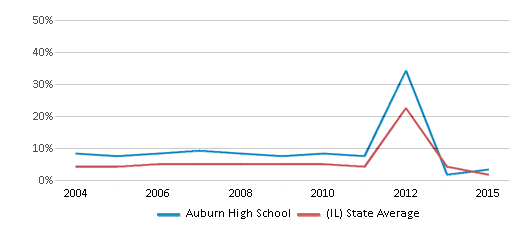
School Statewide Testing
School District Name
Source: National Center for Education Statistics (NCES), IL Dept. of Education
Profile last updated: 02/09/2025
Frequently Asked Questions
What is Auburn High School's ranking?
Auburn High School is ranked #1514 out of 3,426 schools, which ranks it among the top 50% of public schools in Illinois.
What schools are Auburn High School often compared to?
Auburn High Schoolis often viewed alongside schools like Guilford High School, Jefferson High School by visitors of our site.
What percent of students have achieved state testing proficiency in math and reading?
26% of students have achieved math proficiency (compared to the 28% IL state average), while 25% of students have achieved reading proficiency (compared to the 30% IL state average).
What is the graduation rate of Auburn High School?
The graduation rate of Auburn High School is 60%, which is lower than the Illinois state average of 87%.
How many students attend Auburn High School?
1,985 students attend Auburn High School.
What is the racial composition of the student body?
42% of Auburn High School students are Black, 27% of students are White, 19% of students are Hispanic, 8% of students are Two or more races, and 4% of students are Asian.
What is the student:teacher ratio of Auburn High School?
Auburn High School has a student ration of 19:1, which is higher than the Illinois state average of 13:1.
What grades does Auburn High School offer ?
Auburn High School offers enrollment in grades 9-12
What school district is Auburn High School part of?
Auburn High School is part of Rockford SD 205 School District.
School Reviews
4 5/9/2017
As a parent of 2 children who have attended the school's Gifted Program, I speak very highly of Auburn High.The school has dedicated teachers, offers rigorous education with numerous AP courses, has a tremendous Scholastic/Quiz Bowl and Science Olympiad Teams which rank statewide and nationally, as well as many other varied and well-rounded extra-curricular academic/sports opportunities to challenge the aspiring student. The school's gifted program has an enviable record of student placement into more selective colleges and universities. Rockford Gifted High School Program is a a jewel in the crown of our public education system.
5 8/26/2014
As a parent I went to Auburn High School . And I don't know if anything has changed at this school. I feel as long as you are into some sport or some club you won't have to worry about running with the wrong crowd or getting into any trouble.
Review Auburn High School. Reviews should be a few sentences in length. Please include any comments on:
- Quality of academic programs, teachers, and facilities
- Availability of music, art, sports and other extracurricular activities
Recent Articles

What Is A Charter School?
Explore the world of charter schools in this comprehensive guide. Learn about their history, how they operate, and the pros and cons of this educational innovation. Discover key facts about charter schools, including admission policies, demographics, and funding, as well as what to look for when considering a charter school for your child.

10 Reasons Why High School Sports Benefit Students
Discover the 10 compelling reasons why high school sports are beneficial for students. This comprehensive article explores how athletics enhance academic performance, foster personal growth, and develop crucial life skills. From improved fitness and time management to leadership development and community representation, learn why participating in high school sports can be a game-changer for students' overall success and well-being.

February 05, 2025
Understanding the U.S. Department of Education: Structure, Impact, and EvolutionWe explore how the Department of Education shapes American education, from its cabinet-level leadership to its impact on millions of students, written for general audiences seeking clarity on this vital institution.

